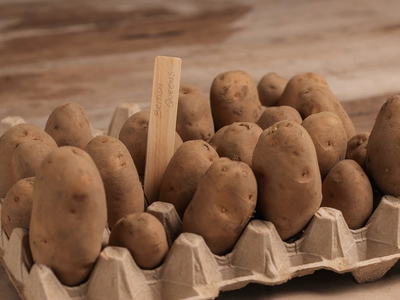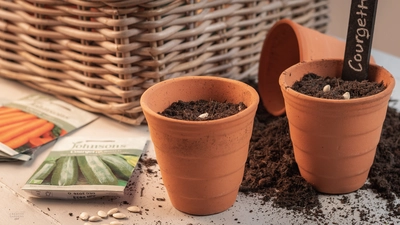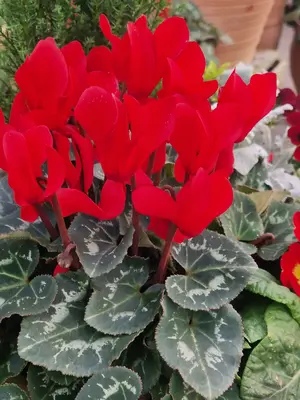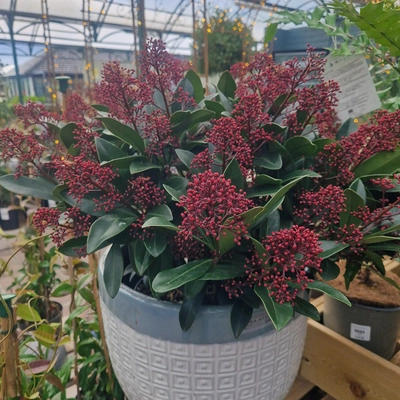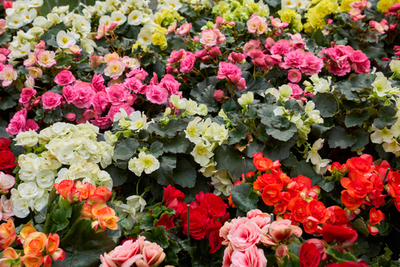
Spring has finally arrived, and with it comes the promise of warmer weather and new beginnings. It's time to start thinking about how to add some colour to your outdoor space, and there's no better way to do that than with annual bedding plants!
Welcome spring into your garden with Begonias
Annual bedding plants are a popular choice for adding vibrant colours and textures to your garden or outdoor space. These plants are grown for one season and are then replaced the following year, giving you the opportunity to experiment with different colour schemes and designs. They come in a variety of colours, shapes and sizes, and can be used to create stunning displays in borders, pots, hanging baskets and window boxes.
One of our absolute favourites is Begonia. These shade-loving plants are known for their large, showy flowers and come in a range of colours, from whites and pinks to deep reds and oranges. And did you know that begonias are named after Michel Bégon, a French politician who was also a botanist?
Why plant annual bedding plants?
There are many advantages to using annual bedding plants in your outdoor space. Firstly, they are relatively low maintenance and require minimal watering and care. Secondly, they are affordable and can be easily replaced each year, allowing you to experiment with different colour schemes and designs. Finally, they are versatile and can be used to create a variety of different looks, from classic cottage gardens to modern, minimalist designs.
How to plant annual bedding plants?
Planting annual bedding plants is a simple and rewarding way to add colour and interest to your garden or outdoor space - and to get that vibrant Spring garden you long for! Here's a 5-step guide to planting annual bedding plants such as Begonia:
- Choose your plants: Select the annual bedding plants you want to grow based on your personal preferences and the growing conditions in your garden. Consider factors such as colour, size, growth habit, and sun/shade requirements. If Begonia is your plant of choice, you’re fortunate to have an easy plant at hand! Begonias can thrive in both sun and shade and can be planted either in pots or in soil.
- Prepare the soil: Loosen the soil in the planting area using a garden fork or tiller. Remove any weeds, rocks or debris, and add a layer of compost or well-rotted manure to improve soil fertility and drainage. Dig a hole for each plant that is slightly larger than the size of its root ball. The depth of the hole should be the same as the height of the root ball. Add a slow-release fertiliser to the bottom of each hole, following the instructions on the package.
- Plant the annual bedding plants: Gently remove the plants from their pots or containers, being careful not to damage the roots. Place each plant in its prepared hole, making sure that the top of the root ball is level with the surface of the soil.
- Water: Water each plant thoroughly after planting, and continue to water regularly throughout the growing season. Avoid overwatering, as this can lead to root rot and other problems.
- Mulch, Maintain and Prune: Add a layer of organic mulch, such as wood chips or straw, around each plant to help retain moisture, suppress weeds, and regulate soil temperature. Regularly deadhead and prune your annual bedding plants to promote healthy growth and encourage the production of more blooms.
How and when to prune annual bedding plants?
To keep your annual bedding plants looking their best, it's important to prune them regularly. Deadheading, or removing the spent flowers, encourages the plant to produce more blooms and helps to keep it looking tidy. You should also remove any damaged or diseased leaves to prevent the spread of disease. The timing and method of pruning will depend on the specific type of annual bedding plant, but here are some general tips:
When to prune annual bedding plants
- Deadheading: Most annual bedding plants benefit from regular deadheading, which involves removing spent blooms as soon as they begin to wilt. This helps to encourage the plant to produce more flowers and prevents it from expending energy on seed production. Deadheading can be done throughout the growing season, as often as necessary.
- Pinching: Some annual bedding plants benefit from pinching, which involves removing the tips of the plant's stems to encourage bushier growth and more blooms. This is typically done when the plant is young and just starting to grow, and may be repeated throughout the growing season.
How to prune annual bedding plants
- Deadheading: To deadhead an annual bedding plant, simply pinch or cut off the spent blooms using a pair of clean, sharp scissors or pruning shears. Make the cut just above a leaf node, where new growth will emerge.
- Pinching: To pinch an annual bedding plant, use your fingertips or a pair of clean, sharp scissors to remove the tip of each stem, just above a leaf node. This will encourage the plant to branch out and produce more blooms.
Buy annual bedding plants at Creative Gardens
With proper care and attention, your annual bedding plants will provide months of colourful beauty and joy in your garden or outdoor space. Adding annual bedding plants to your outdoor space is a great way to add vibrant colours and textures to your garden or outdoor space. With a wide range of colours, shapes and sizes to choose from, there's sure to be an annual bedding plant that suits your style and taste. So, why not add some colour to your outdoor space this spring with some beautiful annual bedding plants?

